I normally like to be fairly certain about the identities of the critters I post in these notes, but sometimes I just have to go out on a limb.
Leaving what has been a cold and miserable late autumn behind, come back with me to Scotia Barrens on a fine afternoon in mid-May. 1
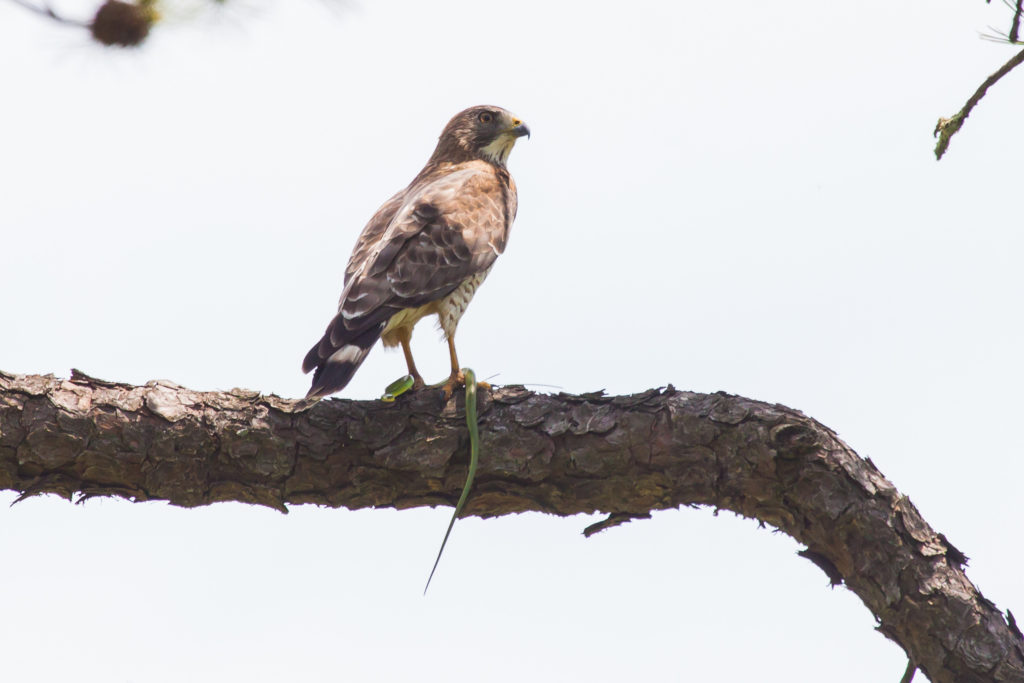
The overall impression is a small, broad-winged hawk, which pretty much identifies it for me as a Broad-winged Hawk (Buteo platypterus). 2 I’m not 100% certain, it may be some other Buteo, or possibly even an Accipiter—Cooper’s (Accipiter cooperii) or Sharp-shinned Hawks (Accipiter striatus), but it looks a lot like the “heavily marked” light juvenile, as shown in my copy of The Sibley Guide to Birds.
I’m calling this a Broad winged Hawk, out on a limb.
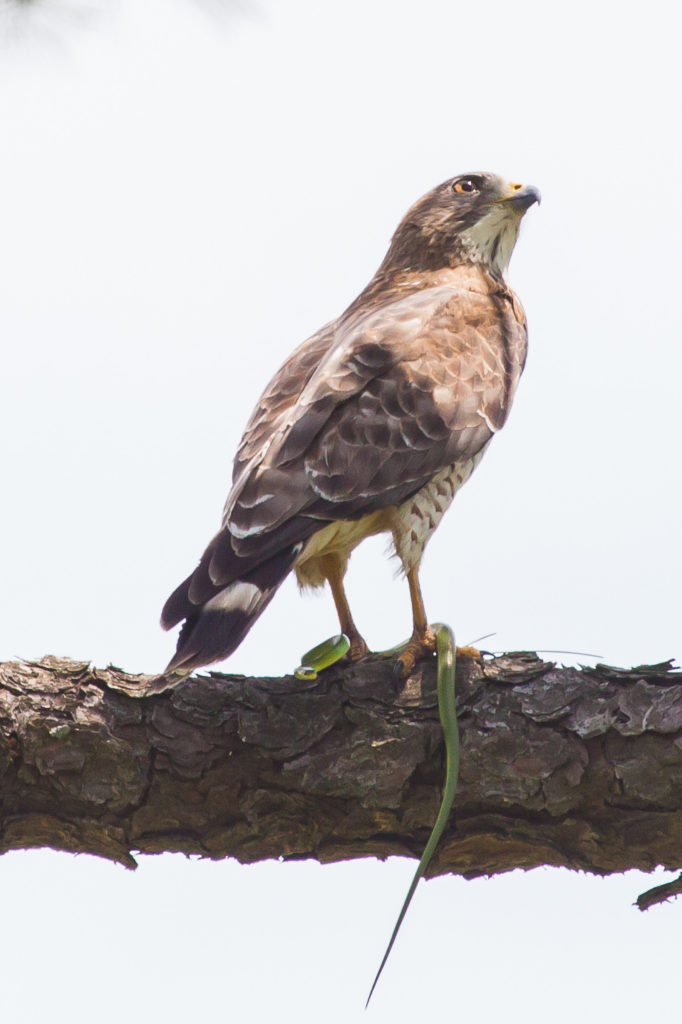
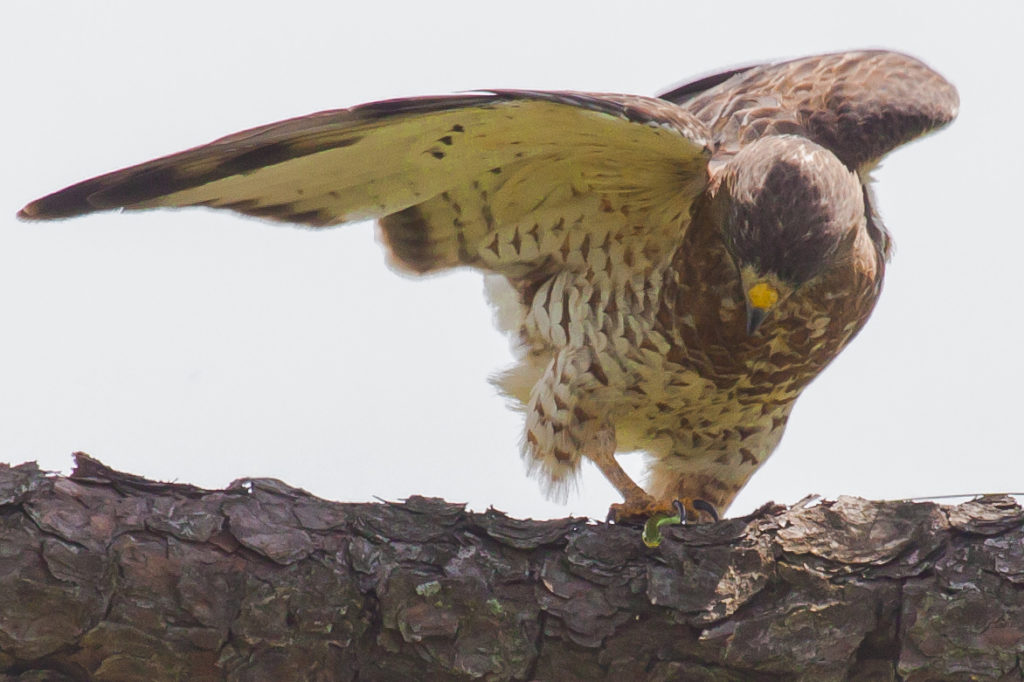
It is holding a snake, a snake that is green, one of our two Green Snakes of the genus Opheodrys, either Rough (O. aestivus), or Smooth (O. vernalis). 3
To tell them apart, I would have to be able to determine whether the scales are keeled or not.
Alas, the photo has not that much detail. But Rough Green Snakes usually haunt the edges of streams and ponds, this was a dry upland.
This was literally a snake in the grass and not hanging in some shrub. Now, while Rough Green Snakes must occasionally come down to earth, they are generally found in bushes and trees, etc.. Smooth Green Snakes are grass snakes.
Smooth Green Snakes live throughout north central Pennsylvania. There is no known population of Rough Green Snakes north of the Blue Ridge in Pennsylvania.
Finally…well…it doesn’t look like a Rough Green Snake.
I’ve dealt with Rough Green Snakes before.4 They are very long and thin and look like thick vines with eyes. Smooth Green Snakes look like—snakes that are green. This looks like a snake that is green.
I’m calling this a Smooth Green Snake out on a limb.
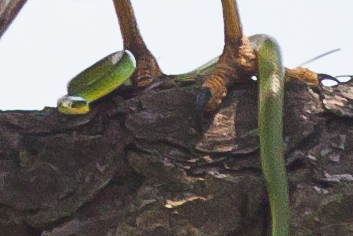
The snake struggled mightily. At one point I thought it was going to escape.
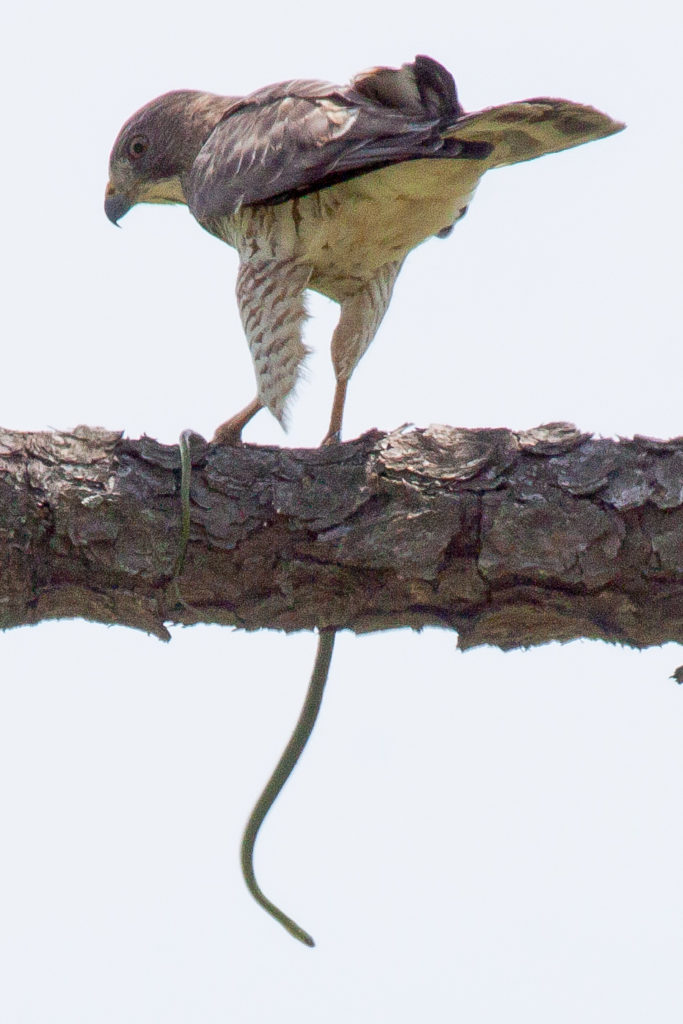
Then it played the serpent card, wrapping itself around the hawk’s legs. The hawk was discomfited.
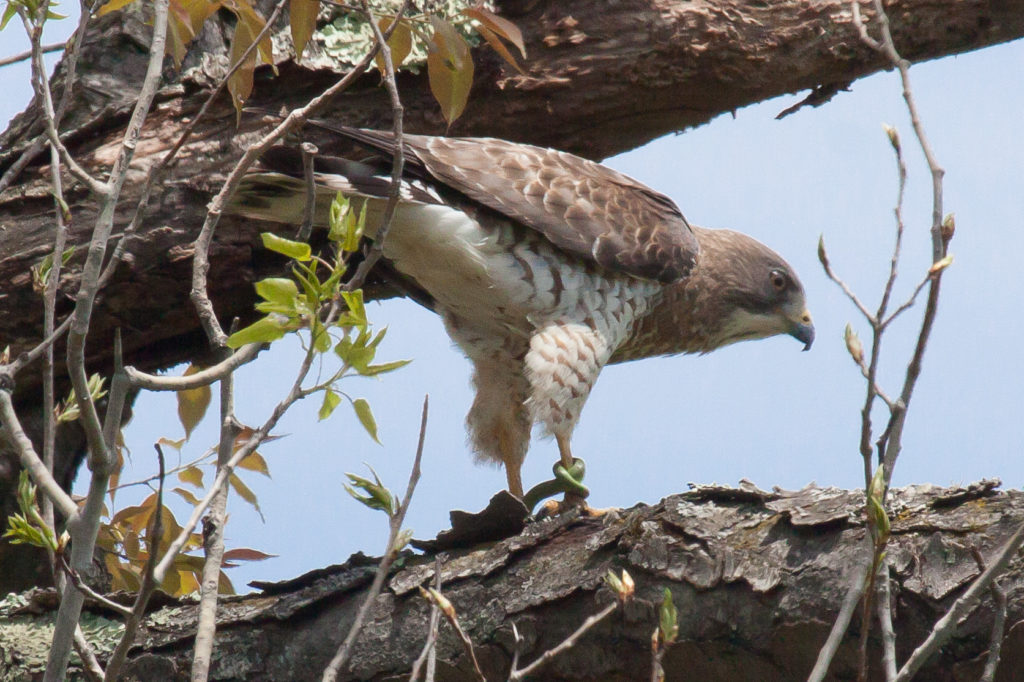
But in the end, as expected, it ended badly for the snake.
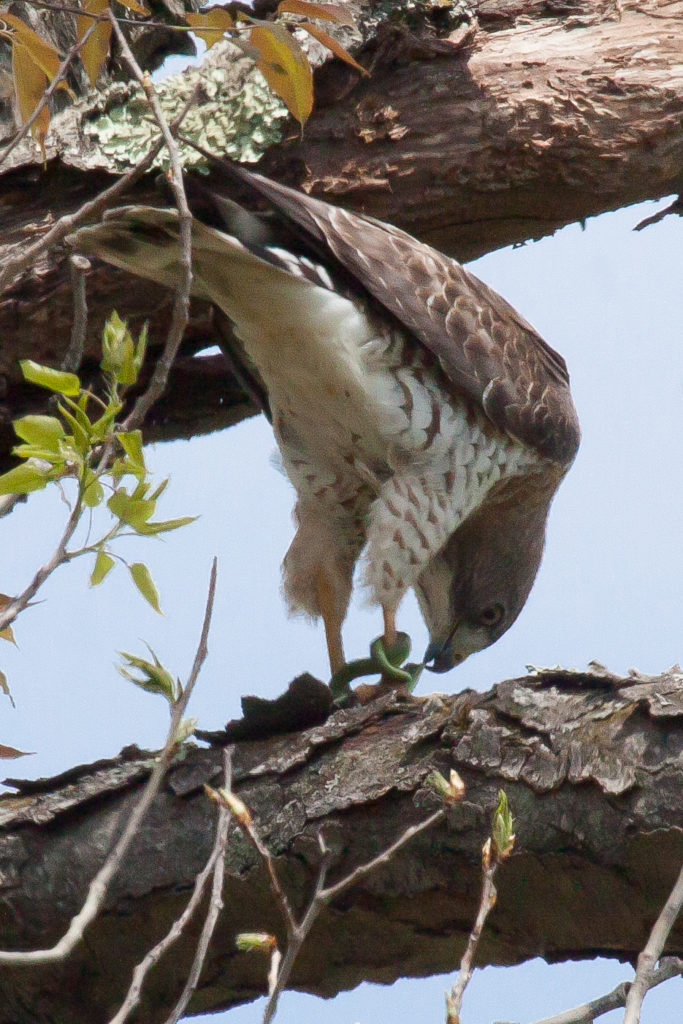
- Scotia Barrens, in Centre County, PA, is an amazing place. It is even more amazing once you realize that it is a post-industrial-revolution landscape.
- Makes sense
- You will find some references to the Smooth Green Snake as Lithochlorphis vernalis. I have chosen to go with Opheodrys vernalis based on my understanding of the Seventh edition of the Scientific and Standard English Names of Amphibians and Reptiles of North America North of Mexico [available online at http://ssarherps.org/pdf/HC_39_7thEd.pdf]: “Given that Liochlorophis…is the monotypic sister genus to the monotypic genus Opheodrys, recognition of the former taxon is unnecessary, and reduces the amount of information conveyed by the names. As such, we retain vernalis in Opheodrys.”
- Late one February afternoon in Oklahoma, about thirty years ago, I came across a Rough Green Snake pretending to be a vine in a low bush beside a tributary of Cache Creek. Two problems: it had climbed during the warmth of mid-day but was now chilled and immobile, and a bright green snake is not particularly well camouflaged in a leafless brown bush. I rescued it and took it home for further observation. When I proudly went to show to my wife, it had absconded. In the warmth of our home, it had quickly become more active. I received some guidance from my wife and, after several hours, found the snake behind some household supplies under the sink. It was too cold to put it outside, so I left it there in hopes it would depart once the weather grew warm, which I suppose it did, as I never saw it again. I must point out that my long-suffering wife was fully briefed and, if not enthusiastic, was accepting. We did not entertain much.
